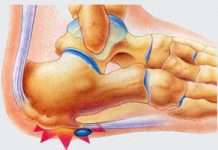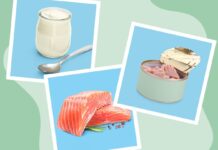Feeling sluggish after a meal is a common experience, but understanding why it happens can help you manage it. This article explores the science behind post-meal fatigue, identifies potential triggers, and provides practical strategies to regain energy. We’re joined by registered dietitians and sleep experts to break down this phenomenon and provide actionable advice.
Understanding Post-Prandial Somnolence
Feeling tired after eating, formally known as postprandial somnolence, can be attributed to several factors. According to experts like registered dietitian and author Jessica Cording, the composition and size of your meals significantly impact blood sugar levels and brain chemicals like serotonin, which regulates sleep. While occasional tiredness after eating is normal, persistent fatigue warrants a check-in with your doctor. Functional medicine consultant Emily Doctor emphasizes that fatigue can signal underlying health issues, including autoimmune conditions, thyroid problems, iron deficiency, anxiety, depression, and sleep disorders.
Reactive hypoglycemia, a condition causing low blood sugar two to five hours after eating, is another potential culprit, resulting in fatigue, sweating, and shakiness. Always advocate for your health and consult a medical professional to rule out any underlying conditions.
Factors Worsening Post-Meal Fatigue
Several lifestyle and dietary habits can exacerbate post-meal fatigue. Here’s a breakdown of common contributors:
- Foods Rich in Tryptophan: Consuming foods high in tryptophan – an amino acid used to produce serotonin – can lead to energy dips. Turkey, chicken, fish, milk, eggs, seeds, and soybeans are common sources.
- Insufficient Sleep: Expert Nishi Bhopal, an integrative psychiatrist and sleep doctor, highlights that excessive daytime sleepiness often stems from inadequate sleep or disruptions in your sleep cycle.
- High-Carb Diets: Filling up on carbohydrates, especially without sufficient protein, fat, or fiber, can cause a blood sugar surge followed by a crash, leading to fatigue.
- Lack of Physical Activity: Inactivity contributes to fatigue and can negatively impact metabolism, circulation, and insulin sensitivity.
- Large or Heavy Meals: Your body expends significant energy digesting large meals, potentially causing a blood sugar drop and draining your energy levels. Some research suggests high-fat meals can alter hormones involved in fatigue.
Strategies to Prevent Post-Meal Fatigue
Fortunately, several strategies can help you combat post-meal tiredness:
- Balanced Meals: Prioritize meals with a balance of protein, healthy fats, carbohydrates, and adequate fiber to promote steady blood sugar levels and sustained energy.
- Prioritize Sleep: Aim for at least seven hours of quality sleep each night. Establish a consistent sleep schedule, remove electronics from the bedroom, and avoid large meals, caffeine, or alcohol before bed.
- Smaller, More Frequent Meals: Instead of large meals, opt for several smaller meals spaced throughout the day to support better blood sugar control. Maintaining a consistent eating schedule is also crucial.
- Food Journaling: Keep a food journal to identify specific foods or eating patterns that affect your energy levels, enabling you to make targeted dietary adjustments.
- Regular Exercise: Incorporate more physical activity into your routine to boost energy levels, improve sleep quality, and optimize mitochondrial health, the cells responsible for energy production. Aim for at least 150 minutes of moderate-intensity exercise per week.
Quick Energy Boosters
If you’re already feeling a food coma coming on, try these immediate strategies:
- Take a Walk: Movement helps balance blood sugar, and outdoor light exposure provides an additional energy boost. Walking immediately after eating can improve blood sugar control.
- Drink Water: Water supports digestion and prevents dehydration, which can worsen fatigue.
- Get Sunlight: Exposure to light after meals may fend off fatigue and increase alertness.
Dietary Recommendations and Sample Menus
Avoiding foods that spike blood sugar – such as refined carbs, ultra-processed foods, and added sugar – is a key step. Moderating portion sizes of high-tryptophan foods is also recommended.
Foods to Limit/Avoid:
- Fried foods
- Chips
- Cookies
- Frozen meals
- White bread
- Instant rice or pasta
- Sugary breakfast cereals
- Candies
- Soda
- Fast food
- Packaged baked goods
Foods to Incorporate:
- Fruits
- Vegetables
- Whole grains
- Legumes
- Nuts and seeds
- Lean proteins
Sample Menus:
- Mushroom and pepper omelet with whole-wheat toast and a banana
- Tofu veggie stir-fry with brown rice
- Overnight oats with Greek yogurt, berries, and almond butter
- Mediterranean chicken and veggie wrap with sweet potato fries
- Avocado toast topped with a fried egg and a side of fresh fruit
- Garlic butter salmon with herbed quinoa and roasted asparagus
The takeaway: While feeling tired after eating is common, persistent fatigue warrants attention. By understanding the underlying causes and implementing lifestyle and dietary adjustments, you can effectively manage post-meal tiredness and maintain consistent energy levels throughout the day




























































